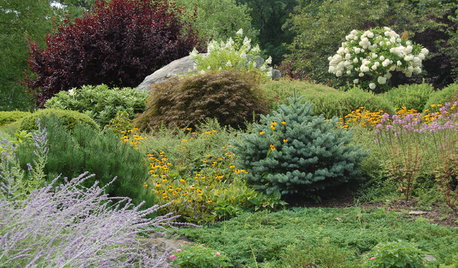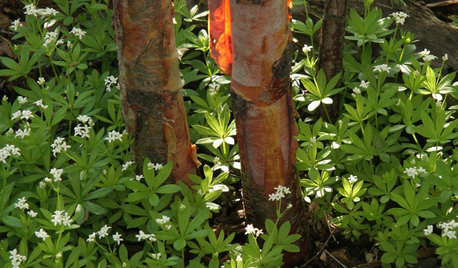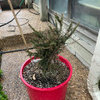Zone 5 drought-resistant conifers for windbreaks?
katskan41
15 years ago
Related Stories

LANDSCAPE DESIGNWarm Up Your Home With an Evergreen Windbreak
Plant tall trees for more warmth in winter, serenity in summer and good looks all year long
Full Story
GARDENING GUIDESGreat Garden Combo: 3 Wonderful Plants for a Deer-Resistant Screen
Protect your privacy and keep deer at bay with a planting trio that turns a problem garden area into a highlight
Full Story
PLANTING IDEASStretch the Budget, Seasons and Style: Add Conifers to Your Containers
Small, low-maintenance conifers are a boon for mixed containers — and you can transplant them to your garden when they’ve outgrown the pot
Full Story
GARDENING GUIDESDesigning With Conifers: Finding the Right Garden Bedmates
In gardening, building on commonalities creates an enduring relationship
Full Story
GARDENING GUIDESTop 12 Summer-Blooming Perennials for Deer-Resistant Drama
Can you have garden color, fragrance and exciting foliage with hungry deer afoot? These beauties say yes
Full Story
TREES7 Deer-Resistant Flowering Trees to Plant this Fall
If you live in a neighborhood with roaming deer, consider these beautiful trees that won't tempt hungry guests
Full Story
GARDENING GUIDES10 Deer-Resistant Native Flowers to Plant This Fall
Learn about natives that embrace some kinds of wildlife but resist grazing deer
Full Story
GARDENING GUIDES8 Deer-Resistant Elegant Evergreen Shrubs to Plant This Fall
Who knew that such beautiful shrubs could be deer-resistant?
Full Story
GARDENING GUIDES6 Deer-Resistant Ground Covers to Plant This Fall
Learn about some of the only low, spreading plants that are reliably deer-resistant
Full Story
CONTAINER GARDENS7 Deer-Resistant Flowers for Your Summer Containers
Grow these as protection for edibles or just for their colorful beauty — deer might not like them, but everyone else will
Full StoryMore Discussions










Smivies (Ontario - 5b)
spruceman
Related Professionals
Danbury Landscape Architects & Landscape Designers · Fort Lee Landscape Architects & Landscape Designers · Prairie Ridge Landscape Architects & Landscape Designers · Arlington Landscape Contractors · Boca Raton Landscape Contractors · Edinburg Landscape Contractors · Flagstaff Landscape Contractors · Lakeville Landscape Contractors · New Braunfels Landscape Contractors · Paso Robles Landscape Contractors · Placerville Landscape Contractors · Streamwood Landscape Contractors · Teaneck Landscape Contractors · Whittier Landscape Contractors · Shafter Landscape Contractorsscotjute Z8
katskan41Original Author
tunilla
katskan41Original Author
flattie
katskan41Original Author
picea
lalalandwi
tunilla
flattie